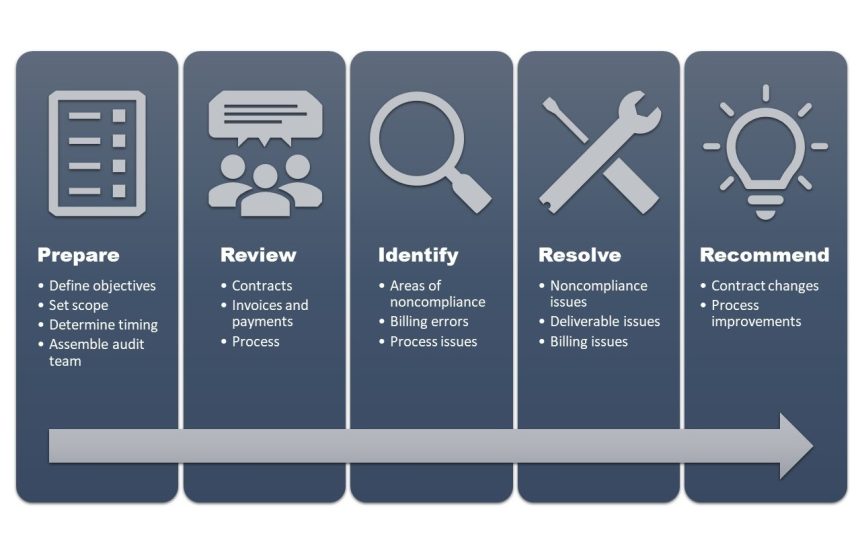Contract compliance audits are an essential part of effective contract management. These audits ensure that all parties are fulfilling their contractual obligations and adhering to relevant regulations. However, conducting a comprehensive contract compliance audit is no small task. Here, we offer you a step-by-step guide to executing a thorough contract compliance audit that strengthens your contractual relationships and minimizes risks.
Understanding Contract Compliance
Before launching into an audit, it’s essential to understand the purpose of contract compliance. It ensures all parties involved in a contract are adhering to the terms and conditions agreed upon and complying with applicable laws and regulations. Non-compliance can lead to penalties, reputational damage, or even contract termination.
Step 1: Pre-Audit Planning
Every successful audit starts with a solid plan. Identify the contracts to be audited, establish clear audit objectives, and outline the audit scope. Be sure to assemble a proficient audit team, which may include contract managers, legal advisors, and financial analysts.
Step 2: Document Review
Begin the audit process with a thorough review of the contract documents. Analyze the terms and conditions, payment details, performance obligations, and any other relevant clauses. Ensure you fully understand the contractual obligations of all parties involved.
Step 3: Compliance Check
Next, evaluate whether all parties are fulfilling their contractual obligations. This involves reviewing performance reports, financial transactions, delivery records, and other related documentation. Pay special attention to any potential areas of non-compliance.
Step 4: Regulatory Compliance Verification
Ensure that all contractual activities are in line with relevant laws, regulations, and industry standards. This involves understanding the regulatory landscape applicable to the contract and checking for compliance accordingly.
Step 5: Identify Areas of Improvement
An audit isn’t just about finding non-compliance—it’s also an opportunity to identify areas for improvement. Whether it’s streamlining processes, enhancing communication, or refining contract terms, highlight these areas in your audit report.
Step 6: Report Preparation and Presentation
Compile your findings into a comprehensive audit report. This report should detail your methodology, findings, areas of non-compliance, and recommendations for improvement. Present this report to relevant stakeholders and discuss the next steps.
Step 7: Implement Changes
The final step in the audit process is arguably the most critical—implementing changes based on your findings. This could involve renegotiating contract terms, enhancing internal processes, or strengthening compliance mechanisms.
Leveraging Contract Lifecycle Management (CLM) Software
Conducting a comprehensive contract compliance audit is a significant undertaking, but modern Contract Lifecycle Management (CLM) software can make the process more manageable. These systems provide a centralized contract repository, automated compliance checks, and advanced analytics features that can streamline your audit process.
A well-executed contract compliance audit can deliver significant benefits—it can identify and address compliance issues, mitigate risks, strengthen contractual relationships, and enhance your overall contract management process.
Summing Up Contract Compliance Audits
In conclusion, conducting checks and implementation of changes, each step in the audit process adds to the strength of your contract management. Leveraging Contract Lifecycle Management (CLM) software can significantly streamline this process. Remember, successful audits are noconducting comprehensive contract compliance audits is crucial for any business dealing with contracts. From pre-audit planning and meticulous document review to diliget just about identifying non-compliance—they’re about transforming insights into actions that enhance your contractual relationships and mitigate risk. With these steps, you’re well on your way to conducting an effective contract compliance audit.


